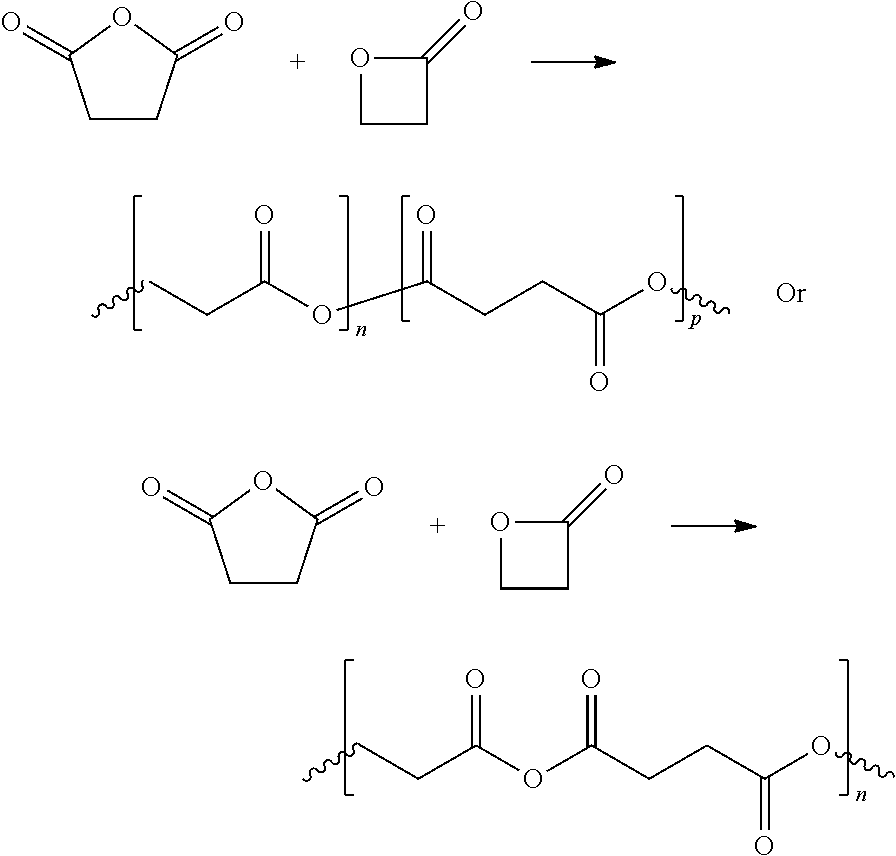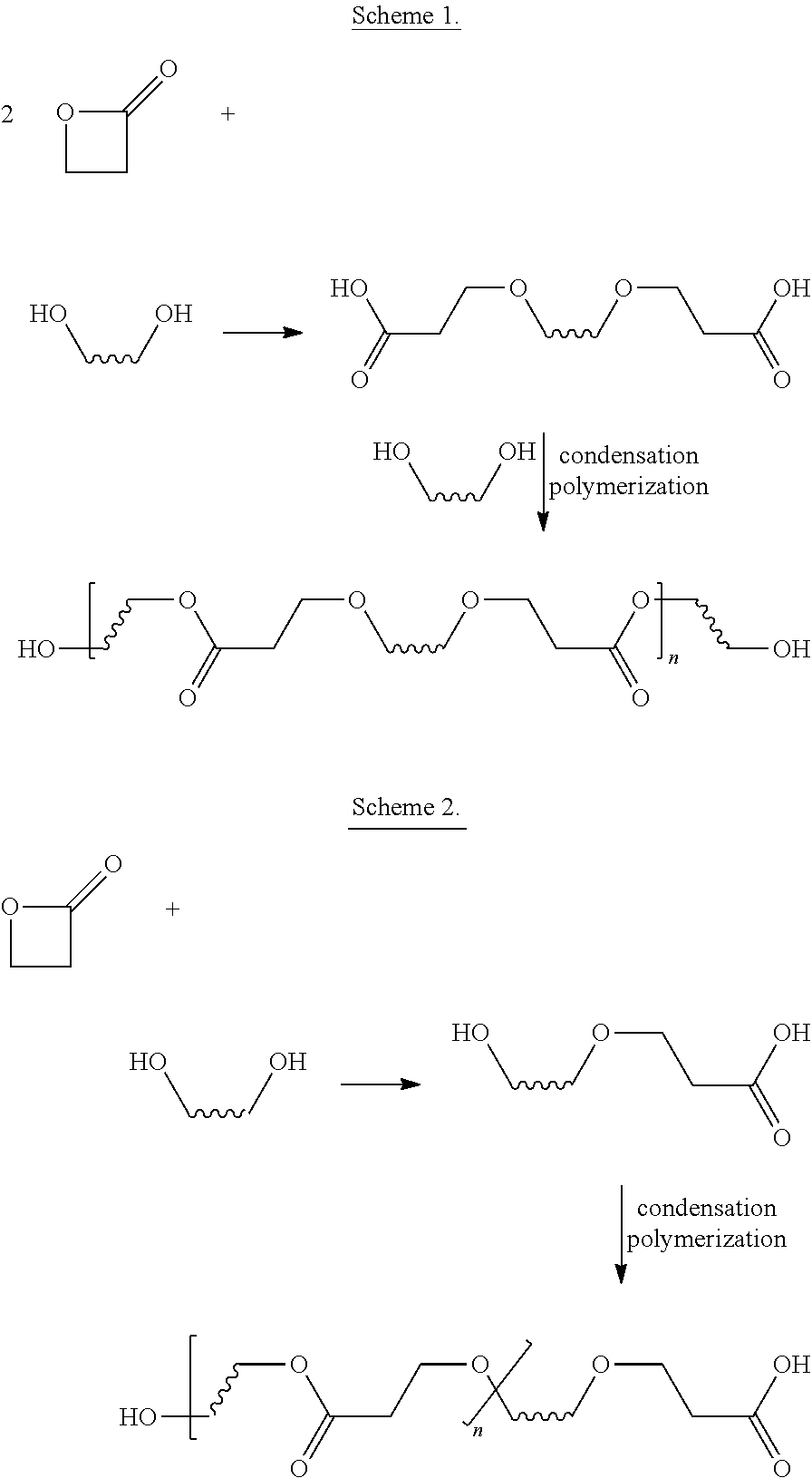Beta-propiolactone based copolymers containing biogenic carbon, methods for their production and uses thereof
a technology of betapropiolactone and copolymer, applied in the field of polymer materials and the production of betapropiolactone copolymers, can solve the problems that the poly(betapropiolactone) is nearly impossible to produce at reasonable operating rates, and achieves poor biodegradability, poor biodegradability, and poor biobased carbon conten
- Summary
- Abstract
- Description
- Claims
- Application Information
AI Technical Summary
Benefits of technology
Problems solved by technology
Method used
Image
Examples
Embodiment Construction
[0029]The following description sets forth exemplary methods, parameters and the like. It should be recognized, however, that such description is not intended as a limitation on the scope of the present disclosure but is instead provided as a description of exemplary aspects.
Definitions
[0030]The terms bio-content and bio-based content mean biogenic carbon also known as bio-mass derived carbon.
[0031]In some variations, bio-content (also referred to as “bio-based content”) can be determined based on the following:
% Bio-content or Bio-based content=
[Bio(Organic) Carbon] / [Total (Organic) Carbon]100%,
[0032]as determined by ASTM D6866 (Standard Test Methods for Determining the Bio-based (biogenic) Content of Solid, Liquid, and Gaseous Samples Using Radiocarbon Analysis).
[0033]The bio-content of the polymers may depend based on the bio-content of the beta-propiolactone used. For example, in some variations of the methods described herein, the beta-propiolactone used to produce the polymers...
PUM
| Property | Measurement | Unit |
|---|---|---|
| pressure | aaaaa | aaaaa |
| temperature | aaaaa | aaaaa |
| organic | aaaaa | aaaaa |
Abstract
Description
Claims
Application Information
 Login to View More
Login to View More - R&D
- Intellectual Property
- Life Sciences
- Materials
- Tech Scout
- Unparalleled Data Quality
- Higher Quality Content
- 60% Fewer Hallucinations
Browse by: Latest US Patents, China's latest patents, Technical Efficacy Thesaurus, Application Domain, Technology Topic, Popular Technical Reports.
© 2025 PatSnap. All rights reserved.Legal|Privacy policy|Modern Slavery Act Transparency Statement|Sitemap|About US| Contact US: help@patsnap.com



